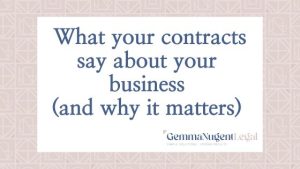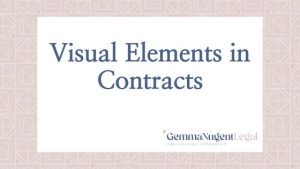I’ve seen a plethora of consultant contracts during my 14 years in the construction and engineering industry. The rare diamonds have been short and practical. Others have rivalled War and Peace in length and long words.
One set of terms and conditions remains a constant: the AS 4122-2010 General Conditions of Contract for Consultants (aka “AS 4122”).
Many engineering and design consultancies and principals (big and small) use AS 4122 as their standard engagement terms for private and public sector projects. AS 4122 is popular because the terms work, they’re simple and most people are familiar with them. AS 4122 is the only standard form contract I regularly see for design and consulting services in Australia.
Wait a sec – what’s a “standard form contract”?
Here’s a handy rundown I prepared earlier. A “standard form” contract is a standardised set of pre-written terms and conditions. AS 4122, like other Australian Standard contracts, was developed by Standards Australia with input from stakeholders, including Consult Australia and various industry membership and advocacy associations.
Pros and Cons
The different stakeholder contributions mean that AS 4122 starts out as a relatively balanced contract. It has all of the nuts and bolts necessary for a consulting services project.
It also has the benefit of familiarity. Both parties know what to expect
However, as AS 4122 is just the general conditions, you will need some kind of additional document to create the legal contract, like an instrument of agreement, a fee proposal with an acceptance field, or a letter of award.
How much does it cost to use AS 4122?
At time of writing, you can purchase a reference version from Intertek Inform (formerly SAI Global) for less than $50. Licences to use the general conditions in your contract start at around $250.
What do consultants like about AS 4122?
AS 4122 can deal with most of the key risks that consultants worry about, including:
- Limiting the consultant’s liability
- Defining the fitness for purpose obligation
- Setting a standard of care consistent with the common law
- Linking the indemnity to fault
- Allowing for either party to retain IP produced in the course of the services
These characteristics mean that the consultant’s risk is more likely to be covered by commercial professional indemnity insurance products.
I’m a consultant and I want to sell consulting services under AS 4122 – what amendments should I make?
Here are some amendments we recommend consultants make:
- Populate Part A of the Annexure, particularly the limitation of liability, payment terms and retention of IP
- Require variations and fee adjustments to be agreed and confirmed in writing, before the varied services are commenced
- Exclude consequential losses
- Limit liability at Item 24 of Part A to “The lesser of reperformance of the Services or 100% of the Consultant’s Fee”
- Provide for recovering costs of collecting late payments
ATTENTION CONSULTANTS: please don’t break your lawyer’s heart ????
I often see consultants and engineers referring to AS 4122 as their terms of engagement in their fee proposal. This is a big step up from saying nothing and hoping the contract fairies will swoop in and fix it all up. Plus, opening negotiations on the terms of engagement puts the engineer in a much stronger position.
BUT. It kills me when those same consultants fail to say anything about Part A of the Annexure (i.e., where all the project details are). This is a big missed opportunity to manage some key commercial and legal risks, such as:
- Specifically defining the scope of the services, to reduce scope creep
- Setting payment terms to support cashflow (e.g., frequency of claims fortnightly or monthly rather than on milestones; 14 day terms instead of 30 or 42 days)
- Limiting liability
- Introducing an interest rate to incentivise prompt payments
Why do principals like AS 4122?
From the client’s point of view, AS 4122 works well because:
- It allows for the scope to be captured by reference to multiple documents (meaning the Client can bring in the RFP, the PPR, the brief, the specification and any other relevant project documents)
- If the consultant represents that the services will meet a standard of care higher than the common law, they can be held to it
- The client can terminate for its own convenience
I’m a principal and I want to procure consulting services under AS 4122 – what amendments should I make?
Principals and head contractors often add these things to AS 4122:
- Insert provisions for the consultant to act as lead consultant or deliver contract administration services
- Create processes for a superintendent to administer the consulting contract
- Reinforce the design review clauses
- Align variation and time clauses with the head contract
- Add a set-off right to the payment clause
- Introduce a form of deed of novation, for the consultant to be novated to the contractor after construction kicks off
- Include a form of deed of release for final payment
- Add certification provisions and forms
CONCLUSION: IS AS 4122 A GOOD CONTRACT?
Yes. AS 4122 is a solid base contract to support consulting and design services projects.
The main advantage is familiarity. Everyone knows what is in it and that it is a balanced document, which means less time and money spent haggling over its terms.
HOW CAN SOUNDLEGAL HELP YOU IF YOU WANT TO USE AS 4122?
If you’re a consultant, we can:
- Help you confirm that your fee proposal is subject to AS 4122 being the terms of engagement
- Work with you to populate the key parts of the Annexure, for use in your fee proposal template
- Develop some special conditions to amend the general conditions, to help you protect your margin and manage your risk
If you’re a principal, we can:
- draft an instrument of agreement template, that you can use whenever you procure design or consulting services
- help you understand how to define the scope of the consultant’s services and the purpose for which the services will be used
- provide project-specific and/or general amendments, to give you greater control over the time, cost and quality of the consultant’s services and deliverables
Thinking of procuring or selling some consulting services soon? Book a 15 minute discovery call so we can discuss how






